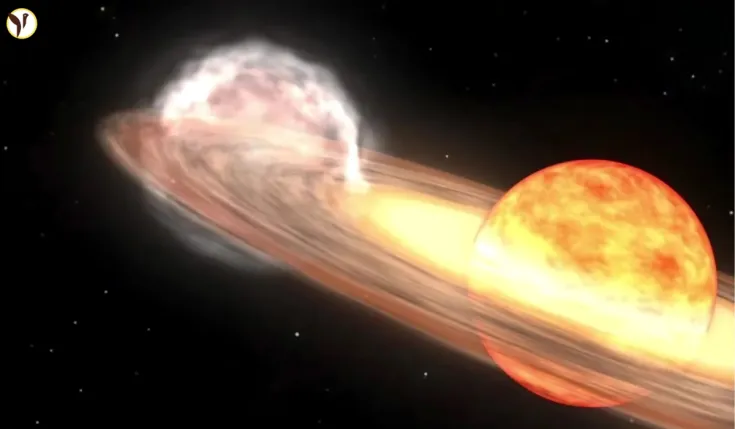A Rare Star Called the Blaze Star Will Soon Explode — and You Might See It From Your Backyard
If you enjoy looking at the night sky, you’re in for something incredible. A rare celestial event is expected to happen sometime this year, and the best part? You might be able to see it with your own eyes—no telescope or fancy equipment required.
Astronomers are closely watching a star system known as T Coronae Borealis, nicknamed the Blaze Star, which is located about 3,000 light-years away from Earth. This system is gearing up to explode in a powerful nova, a bright burst of light caused by a buildup of energy on the surface of a white dwarf star.
This kind of explosion doesn’t happen often. In fact, the last time the Blaze Star exploded was back in 1946. It typically erupts once every 80 years, which means this upcoming explosion is a once-in-a-lifetime event for most people alive today.
What Is a Nova, and Why Is It Different From a Supernova?
To understand what’s happening, it helps to know the difference between a nova and a supernova. A nova occurs in a binary star system, where one star is a dense, dead star called a white dwarf. Over time, it pulls gas—mostly hydrogen—from its nearby partner star. When too much gas builds up on the surface, it triggers a massive thermonuclear reaction, causing a bright explosion.
It doesn’t destroy the star, but it does light up the sky in a major way. In contrast, a supernova is a much larger and more violent explosion that usually marks the end of a massive star's life.
When Will the Blaze Star Explode?
Experts believe the Blaze Star will explode sometime between now and September 2024, although it’s impossible to pinpoint the exact date. Once it happens, the star will become bright enough to be seen with the naked eye, even from areas with some light pollution.
The explosion is expected to make the star as bright as the North Star, also known as Polaris, for several nights. Then, it will slowly fade and return to being invisible without a telescope.
Where Should You Look in the Sky?
To see the Blaze Star after it explodes, look for the Corona Borealis constellation. It’s shaped like a small, half-circle or crown and sits between the Hercules and Boötes constellations in the night sky. This region is visible mostly in the Northern Hemisphere, especially during summer.
If you're in the U.S., you’ll have a good chance of seeing it if you’re away from bright city lights. Stargazing apps and websites can help you locate the constellation if you're not sure where to look.
Why This Event Matters
Events like this are extremely rare. While there are other stars that go nova, T Coronae Borealis is one of only 10 known recurring novae in our galaxy. That means scientists already know its history and have been tracking its behavior for years. NASA and astronomers worldwide are excited because this explosion offers a chance to study the life cycle of stars, especially how binary star systems interact over time. But for the rest of us, it’s a chance to look up and witness something that hasn’t happened in almost a century—a brief, beautiful flare of light from deep space that reminds us how big and mysterious the universe really is.
So keep your eyes on the night sky in the coming months—you just might catch a glimpse of the Blaze Star’s stunning return.






